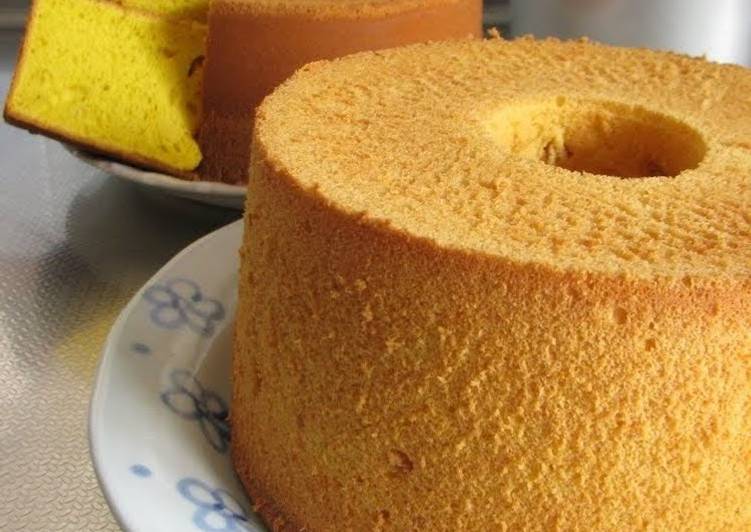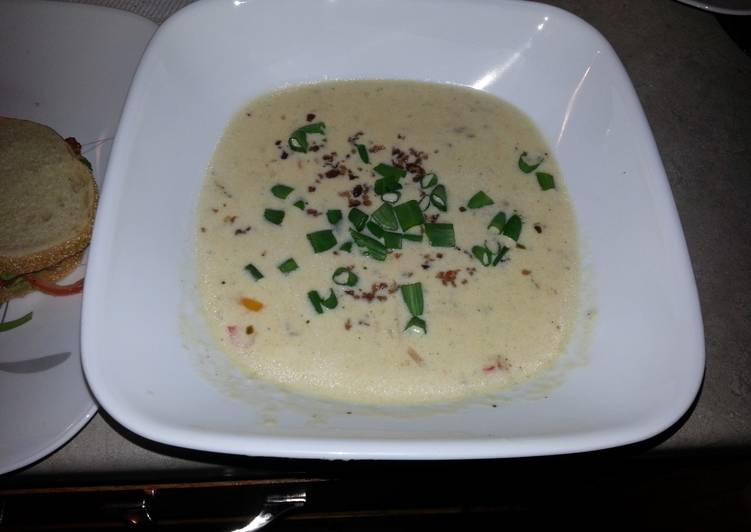
Thanks for Comming, wish you’re having an amazing day today. Now, I’m gonna show you how to make a distinctive dish, kabocha squash chiffon cake. It is one of my favorites food recipes. This time, I am going to make it a bit unique. This is gonna smell and look tasty.
See recipes for Comforting Kabocha Squash Cake too. Kabocha, Japanse pumpkin is full of Vitamin A, Vitamin C, and Beta carotene. It tastes more like sweet potato than pumpkin. Simmered Kabocha Squash, or what we call Kabocha no Nimono (かぼちゃの煮物), is one of the most classic and popular simmered dishes in Japan.
Kabocha Squash Chiffon Cake is one of the most popular of recent trending foods on earth. It is enjoyed by millions daily. It’s simple, it’s quick, it tastes delicious. Kabocha Squash Chiffon Cake is something that I’ve loved my whole life. They’re fine and they look fantastic.
To get started with this particular recipe, we must prepare a few ingredients. You can cook kabocha squash chiffon cake using 9 ingredients and 26 steps. Here is how you cook it.
The ingredients needed to make Kabocha Squash Chiffon Cake:
- Get 3 large + 1 egg white Egg
- Make ready 50 grams Sugar (caster is ok) for the meringue
- Make ready 80 grams Steamed kabocha squash
- Take 20 grams ○Soft light brown sugar
- Take 5 grams ○Honey
- Make ready 40 ml Vegetable cooking oil (not low-cal healthy oils)
- Get 70 ml Water
- Prepare 65 grams ●Cake flour
- Prepare 1 (as needed)…about 2 shakes ●Cinnamon powder
Kabocha squash is a green Japanese pumpkin that is available year-round. Here's you'll learn all you need to know about buying, cooking, and storing Like many winter squash, kabocha have a tough rind that can be difficult to cut through. Using a large chef knife, carefully cut the squash in half. And this chiffon cake is more on the light side!
Instructions to make Kabocha Squash Chiffon Cake:
- Separate the egg whites and yolks. Measure the vegetable oil. Sift the powdered ingredients. Knead the ingredients marked with ○.
- Whisk the yolks well and add the kabocha, sugar, and honey. Combine well.
- Add the vegetable oil and water little by little, while continuously stirring.
- Sift the flour into the mixture all at once. Start mixing from the center of the batter and work your way towards the outside. This prevents clumps from forming. (It will be the consistency of loose tempura batter).
- Separate the sugar into 3 batches and make the meringue. Beat the egg whites, add 1/3 of the sugar and whip on high.
- When smooth foam begins to form, add 1/2 of the remaining sugar and whip at high speed.
- When it begins to get fluffy and stiff peak begin to form, add the rest of the sugar. The egg whites will be a bit watery and slide down the edges.
- When it becomes glossy and tracks are left behind when zigzagging through the mixture, mix by hand. When stiff peaks form, it's done.
- Add 1/3 of the meringue into the bowl from Step 4 and gently mix together with a whisk.
- Next, add half of the remaining meringue and this time just mix the top half of the batter. (You don't have to mix all the way to the bottom).
- Lastly, leave about 1 ladle amount of meringue and add the rest to the batter. With a whisk, mix the top part of the batter until the stiff peaks of the egg whites are broken down.
- Switch to a spatula. Fold over the batter from the bottom and bring to the top, in a folding motion. (about 15-20 times)
- Add a ladle amount of batter to the ladle amount of meringue from Step 11. Pour the remaining batter into the cake mold and, grasping the center cylinder, lightly rap against the counter to get rid of air bubbles.
- Lightly stir the batter from Step 13 and pour on top of the batter in the cake mold. Use the spatula to smooth the surface of the batter.
- This is the smoothed batter in the cake mold. Leaving out the ladle amounts of meringue in Steps 11-14 lowers the chance of it flattening. (If you don't leave the meringue at the end and just mix, it's okay)
- Bake at 180°C for 10 minutes. Lower to 160°C for 15 minutes. After 15 minutes, cut a few notches into the cake with a knife (optional).
- When you push on the cake with a fingertip and it does not deflate or indent, then it's finished! A just baked cake looks like this.
- Turn it upside down and place on a cup to cool (the center should cool).
- With a knife or bamboo skewer, loosen the edges. Push down on the mold with a knife. If using a bamboo skewer, slowly move it up and down. For the bottom, use a knife etc, and circle it around once.
- When you slice it, it looks like this.
- This is using a paper mold. Perhaps this was because the kabocha was too watery? Once cooled, the paper tore. It was baked for an extra 15 minutes! Even though I checked on it with a skewer, see the tip in Step 23.
- If the kabocha paste is too soggy, decrease the amount of water. This recipe uses the maximum amount of water, so adjust accordingly as in Step 21.
- For decorating and using a paper mold, lower the water to 60 ml. If it's too soft, it's easy to mess up.
- The previous recipe used 3 eggs, 100 g of kabocha paste and 40 ml of water. It didn't rise very much, but it had a very kabocha flavor.
- I decorated the cakes in Step 23 with "Kabocha Mont Blanc Chiffon". If you don't have a Mont Blanc piping piece, pipe with a plastic bag. - - https://cookpad.com/us/recipes/143798-kabocha-mont-blanc-chiffon-cake
- You can also make it with frozen kabocha. Defrost in the microwave and then peel the skin.
Using a large chef knife, carefully cut the squash in half. And this chiffon cake is more on the light side! And you know what that airy and super soft texture goes extremely well with? Chiffon cake with Sencha (Japanese green tea) 煎茶入りシフォンケーキ. I remember the first time I ever used green tea in food.
So that’s going to wrap this up for this exceptional food kabocha squash chiffon cake recipe. Thank you very much for reading. I am confident that you can make this at home. There is gonna be interesting food at home recipes coming up. Don’t forget to save this page in your browser, and share it to your loved ones, colleague and friends. Thank you for reading. Go on get cooking!

